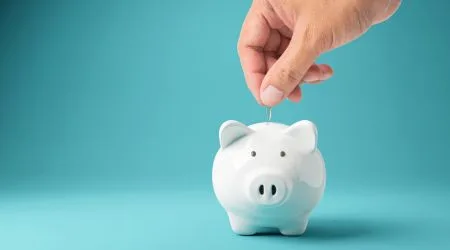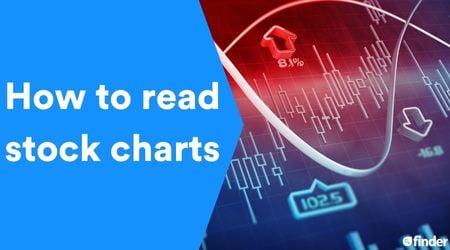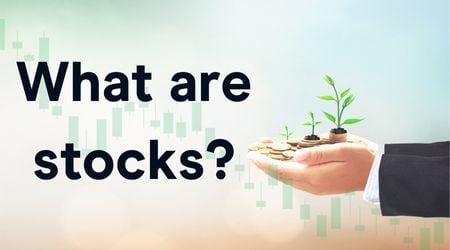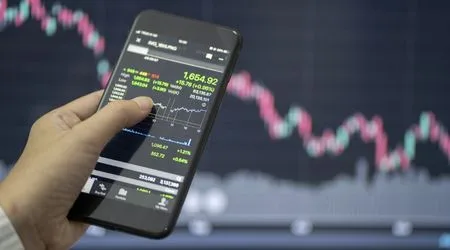ETFs are a popular choice for investors looking for an easy, low-cost way to diversify their portfolio. But how exactly do ETFs work and how can you use ETFs to make money? Keep reading to find out.
What is an ETF?
ETF stands for exchange-traded fund. An ETF is a fund that pools together investors’ money to buy a diversified range of assets, such as stocks and bonds. So when you buy a share in an ETF, you gain immediate exposure to a whole basket of securities.
How do ETFs work?
ETFs are created by fund managers and ETF issuers. Just like investing in stocks, you can buy and sell shares in ETFs on stock exchanges like the Toronto Stock Exchange (TSX) and New York Stock Exchange (NYSE). ETF prices fluctuate throughout the day, and you can buy and sell them at any time during stock market trading hours.
Many popular ETFs are designed to track major market index or commodity performance. For example, some funds aim to mimic the performance of the S&P 500 by investing in companies featured in the index. Investments are also weighted to accurately reflect the index — so if Amazon (AMZN) represents 3% of the S&P 500, it will also make up 3% of the ETF’s investments.
But there are also thematic ETFs that target specific market sectors or industries, such as tech stocks, renewable energy or global stocks.
Other ETF features include:
- Passive or active. Many ETFs are passively managed and aim to mirror the returns of a benchmark index. But some funds are actively managed to try and outperform an index.
- Low cost. You’ll pay much less in brokerage fees if you invest in a single ETF rather than buying stocks in individual companies. In fact, many online brokers don’t charge any commissions on ETF trades, while ETFs tend to have lower expense ratios (management fees) than mutual funds.
- Tax efficient. ETFs tend to incur less capital gains tax than mutual funds, which trade assets much more frequently. In the words of the SEC, “taxes on ETF investments have been historically lower than those for mutual fund investments.”
- Open-ended. Most ETFs are open-ended, which means there’s no limit on the amount of shares the fund can issue.
How do ETFs make you money?
There are 3 ways to make money from ETFs:
- Price rises. You can make a profit if you buy shares in an ETF and then sell them for a higher price.
- Dividends and interest. If the assets the ETF owns pay dividends or interest, you get to share a portion of the profits.
- Capital gains. The ETF may also distribute capital gains to shareholders, though ETFs typically don’t do this as much as mutual funds.
What are the different types of ETFs?
Passive and actively managed stock ETFs are far from the only types of ETFs you have to choose from. Other ETF types include:
- Bond ETFs. Also known as fixed-income ETFs, bond ETFs invest in bonds and other fixed-income securities. Bond ETFs can be traded on stock exchanges (just like stock ETFs) and pay interest in the form of a monthly dividend. Any capital gains are distributed to investors through annual dividends.
- Commodity ETFs. As the name suggests, commodity ETFs are designed to track the performance of commodities such as gold and other precious metals, oil and gas, and agricultural goods.
- Currency ETFs. Currency ETFs provide exposure to foreign currency by tracking the performance of a single currency or a basket of currencies relative to the Canadian or US dollar.
But there are also a couple of other stock ETFs available:
- Inverse ETFs. Rather than tracking the performance of a benchmark index, inverse ETFs are designed to produce the opposite returns. In other words, if the index goes down, the value of the ETF goes up. These actively managed ETFs can be useful if you want to hedge against other investments but are only suitable for short-term trading as the expense ratios can be high.
- Leveraged ETFs. A leveraged ETF doesn’t only track an index — it aims to double or even triple its returns. These ETFs use derivatives to magnify your exposure to the investment without requiring you to invest any additional capital. However, while any gains are amplified, so too are any losses. And because most leveraged ETFs reset to the benchmark index each day and are therefore only suitable for short-term trading.
ETFs and tax
As with any other type of investment, ETFs have tax implications. When you earn interest on an ETF or make money from selling an ETF, this counts as part of your income for tax purposes. The tax rate depends on your income bracket. Speak to a tax professional for advice based on your specific financial situation.
How are ETFs different from mutual funds?
For a novice investor, it can be difficult to tell the difference between an ETF and a mutual fund. Both types of funds invest in a basket of assets, providing easy diversification, but there are a few key differences:
- Passive vs active. ETFs were traditionally passively managed, while mutual funds are known for being actively managed. However, there are also actively managed ETFs and passively managed mutual funds available.
- Expense ratios. Mutual funds generally have higher management fees than ETFs due to being actively, rather than passively, managed.
- How funds are traded. Buy and sell ETFs on exchanges just like stocks, but mutual funds can only be traded at the end of the trading day. ETFs can also be purchased through a wider range of brokers than mutual funds.
- Initial investment. If you choose a broker that offers fractional shares, you can invest in an ETF for as little as $1. However, mutual funds come with set minimums that could be $1,000 to $3,000.
- Taxation. ETFs are generally more tax-efficient than mutual funds, with the latter usually likely to have higher capital gains taxes.
Are ETFs good for beginners?
Generally speaking, yes. If you’re a novice investor, there are several reasons why you might want to consider investing in ETFs.
ETFs offer a simple and convenient way to build a diversified portfolio. ETFs are easy to buy through online brokers, you can get started with a small amount of money and you’ll pay a lot less in brokerage fees than if you invest in individual stocks.
Of course, you’ll also need to consider management fees. Plus, ETFs often come with lower risk than investing in individual stocks but don’t offer the same potential for high rewards. As for leveraged and inverse ETFs, those are better suited to more experienced investors.
What to consider when choosing an ETF
Before investing in any ETF, take some time to read its prospectus. This document lays out all the essential information you need to know about a fund. Make sure you check:
- The fund’s investment objective. What index does the fund aim to track or what performance does it aim to deliver, and in what timeframe? Does this align with your investment goals and risk/reward appetite?
- The expense ratio. Compare the expense ratio across a range of funds to work out how much you’ll pay in management fees.
- Prior performance. Check out how the ETF has performed over the past 1, 3, 5 and 10 years. How does this compare to other similar funds? Of course, remember that past performance is no guarantee of future success.
- Trading volume and liquidity. Take a look at an ETF’s trading volume to get an idea of its liquidity. Higher liquidity means tighter bid-ask spreads and will make it easier to sell shares in the ETF whenever you need.
- Tracking difference. Check whether the fund has accurately tracked its underlying benchmark index. For example, if the index went up 10%, did the ETF also increase by 10% — or was there a tracking difference?
Open an investment account to buy and sell ETFs
Finder Score for stock trading platforms
To make comparing even easier we came up with the Finder Score. Trading costs, account fees and features across 10+ stock trading platforms and apps are all weighted and scaled to produce a score out of 10. The higher the score the better the platform - simple.
Bottom line
ETFs are worth considering for both novice and more experienced investors, offering an easy and inexpensive way to gain exposure to a diverse portfolio of assets. However, it’s important to understand how ETFs work and compare a range of funds before deciding where to invest your money.
FAQs
More on investing

How to invest in the EURO STOXX 50
Want to invest in the Euro Stoxx 50 in Canada? Explore investment platforms and popular Euro Stoxx 50 index funds.
Read more…
What are the best stocks for beginners with little money to invest?
Want to dive into investing but don’t have much to spend? Take a look at these types of stocks.
Read more…
Meme stocks: What they are and examples of popular stocks
Meme stocks can produce large gains in short periods, but the stocks are volatile.
Read more…
How to read stock charts
Learning how to read stock charts and recognize chart patterns can unlock your success as a trader.
Read more…
What are stocks?
Owning a stock means you own part of a company and can potentially grow your wealth. But there is a risk of loss.
Read more…
How to analyze a stock
Learn how to research stocks and find the right investment opportunities in 4 steps.
Read more…More guides on Finder
-
How to invest in the EURO STOXX 50
Want to invest in the Euro Stoxx 50 in Canada? Explore investment platforms and popular Euro Stoxx 50 index funds.
-
How to buy Rheinmetall stock in Canada
Steps to owning and managing RHM, with 24-hour and historical pricing before you buy.
-
How to buy Riot stock in Canada
Steps to owning and managing RIOT, with 24-hour and historical pricing before you buy.
-
Best renewable energy stocks
These are the best renewable energy stocks to buy now in Canada.
-
A guide to futures trading in Canada
Learn the pros and cons of futures trading, how it works and how to start trading.
-
Best stocks to buy right now in Canada
Finder’s unique algorithm found the 20 best TSX stocks to buy right now.
-
Guide to online trading in Canada
Compare the best online trading platforms in Canada and learn how to buy stocks online.
-
How to invest in the S&P 500 in Canada
Find out how to invest in the S&P 500 in Canada—one of the world’s most popular stock indices—to diversify your portfolio.
-
How to buy Meta Platforms stock in Canada
Steps to owning and managing META, with 24-hour and historical pricing before you buy.
-
How to buy Amazon stock in Canada
Steps to owning and managing Amazon stock (AMZN), with 24-hour and historical pricing before you buy.
